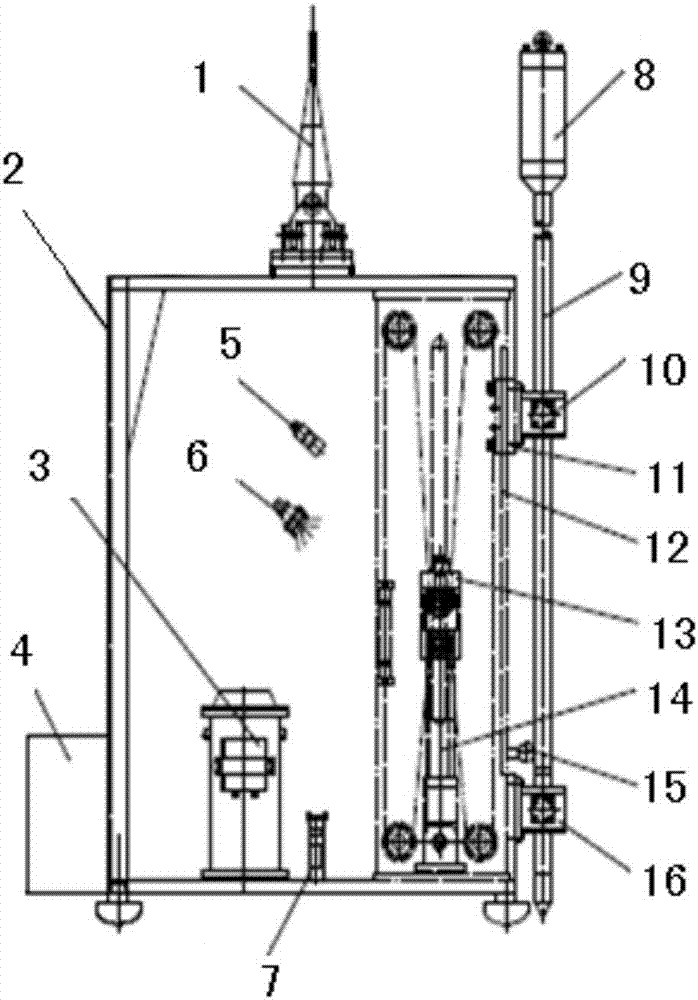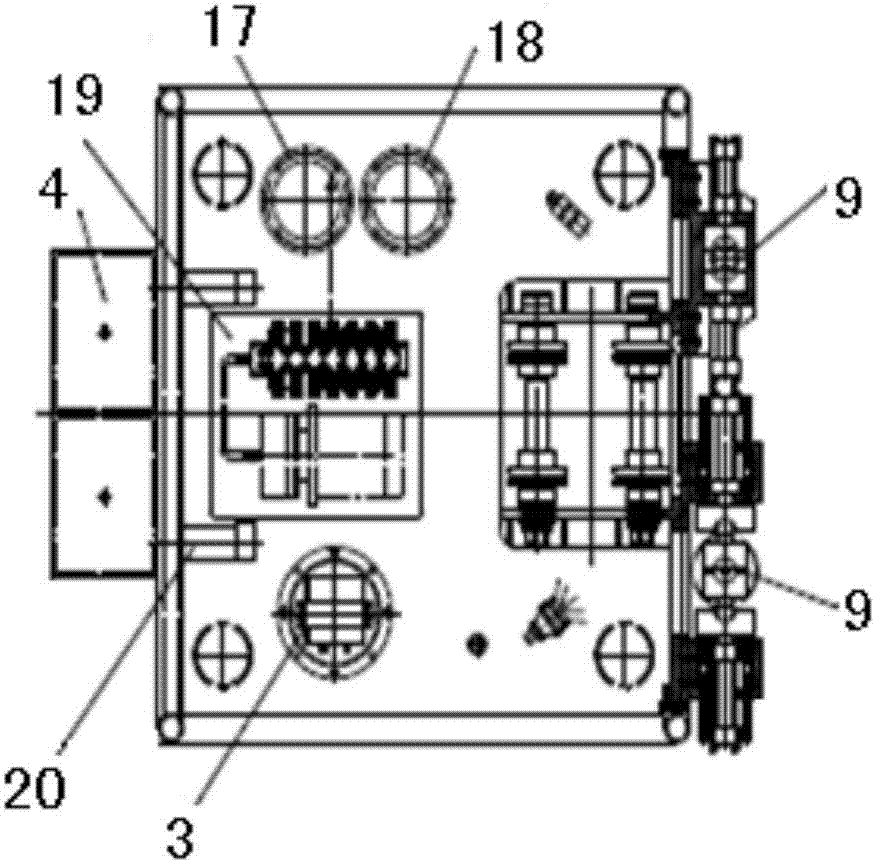Seabed-based static penetration and sampling platform
A seabed-based, static technology, applied in the fields of marine engineering geology and marine observation, can solve the problems of lack of timeliness, high cost of drilling and sampling, and the impact of data analysis.
- Summary
- Abstract
- Description
- Claims
- Application Information
AI Technical Summary
Problems solved by technology
Method used
Image
Examples
Embodiment Construction
[0024] Such as Figure 1 to Figure 4 As shown, this embodiment provides a seabed-based static penetration and sampling platform, the upper end of the frame 2 is connected with a load-bearing head 1, and the cables can be connected to the frame 2 through the load-bearing head 1, and are lowered or recovered from the deck of the ship. Cables to lower the frame 2 to the seabed or return to the deck from the seabed. The frame 2 serves as the carrier of the entire platform, and the frame 2 is equipped with a battery compartment 3, a counterweight box 4, a camera 5, a lighting lamp 6, an altimeter 7, a GPS positioning module, a drive cabin 17, a control cabin 18, a hydraulic station 19, and a counterweight box 4. Components such as the counterweight cylinder 20 and the penetration unit.
[0025] The seabed-based static penetrating and sampling platform in this embodiment includes two penetrating units, of course, there may be multiple penetrating units. The penetrating unit includ...
PUM
 Login to View More
Login to View More Abstract
Description
Claims
Application Information
 Login to View More
Login to View More - R&D
- Intellectual Property
- Life Sciences
- Materials
- Tech Scout
- Unparalleled Data Quality
- Higher Quality Content
- 60% Fewer Hallucinations
Browse by: Latest US Patents, China's latest patents, Technical Efficacy Thesaurus, Application Domain, Technology Topic, Popular Technical Reports.
© 2025 PatSnap. All rights reserved.Legal|Privacy policy|Modern Slavery Act Transparency Statement|Sitemap|About US| Contact US: help@patsnap.com



